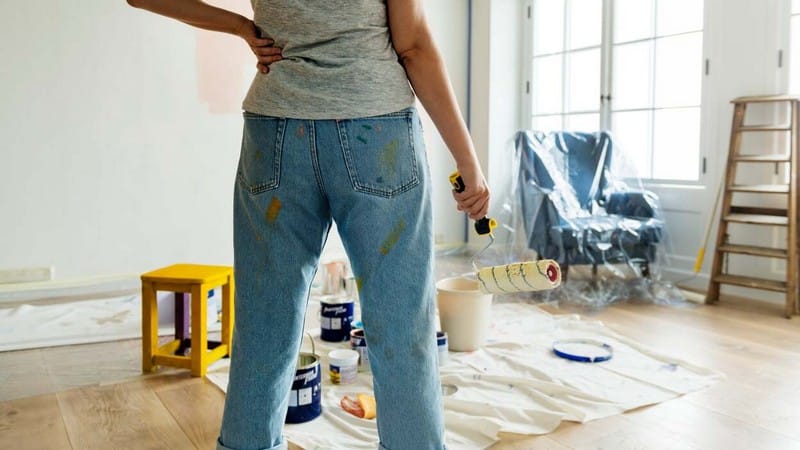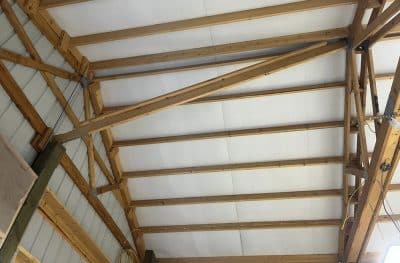
When you first move into a house, it often feels like a blank canvas. It’s yours, but it’s not quite “home” yet. You might find yourself wondering: how can you turn this space into a place that truly feels like yours? Transforming a house into a home is more than just making it look beautiful—it’s about creating an environment where you feel comfortable, relaxed, and connected. In this guide, we’ll explore some essential tips that can help you make the most of your space and ensure that your house becomes a cozy, functional home for years to come.
Why Turning Your House into a Home Matters
Creating a home that truly feels like your own is essential for your well-being. Your home is a sanctuary, a space where you unwind and recharge, and it should reflect your personality, preferences, and needs. The act of personalizing your living space can have significant psychological benefits. Research has shown that living in a space that feels comfortable and reflects your identity can reduce stress and increase overall happiness.
Moreover, a thoughtfully designed home can also enhance your productivity. When every room serves a purpose and every corner is styled to fit your life, you’ll naturally feel more at ease. This, in turn, can help improve your mental clarity, making your home not just a place to live, but a space where you thrive.
Personalize Your Space with Meaningful Décor
Personalizing your home is perhaps one of the easiest ways to make it feel more like your own. Your home should reflect who you are, and the best way to achieve this is by incorporating meaningful décor into your space. Whether it’s family photos, artwork, or mementos from your travels, these personal touches create a sense of attachment and warmth.
One way to personalize your space is by selecting décor that speaks to your personality. If you’re a nature lover, incorporating plants or nature-inspired colors into your décor can help bring a calming vibe to your home. Alternatively, if you love modern or minimalist design, clean lines and neutral tones might be your go-to. The key is to choose pieces that resonate with you, making your home a place where you feel at ease.
In addition to personalizing your space, you should also ensure that your décor is functional. For example, opt for multi-purpose furniture that can save space while still adding character. A bookshelf that doubles as a room divider or a coffee table with hidden storage can be both stylish and practical.
Focus on Functionality and Flow
While décor is important, functionality is just as critical in making your house feel like a home. The layout of your rooms and how well you can use each space will significantly impact your comfort and overall experience in your home. You may have heard the phrase “form follows function,” and when it comes to home design, it holds true.
Consider the flow of your home: is there a natural movement from one room to the next? Are spaces grouped together logically? For example, the kitchen should be easy to access from the dining area, and living spaces should encourage relaxation and social interaction. To achieve this, try to visualize how you’ll be using the space on a daily basis and plan your furniture accordingly.
Small changes can make a big difference in how functional your home feels. Adding additional storage solutions, such as built-in shelves or under-bed storage, can help you keep your space organized. When every room has a clear purpose and is easy to navigate, your home will feel more welcoming and comfortable.
Use Natural Light to Enhance Your Home
Natural light plays a vital role in setting the mood of your home. A well-lit space feels larger, warmer, and more inviting. If your home feels dark and cramped, consider ways to enhance the natural light that enters your space. One simple way to do this is by opting for light-colored walls, which can reflect light and make rooms feel more spacious. You can also use mirrors to bounce light around the room and create the illusion of more space.
In addition to improving the aesthetics of your home, maximizing natural light can have functional benefits as well. Rooms that receive more natural light tend to be more energy-efficient because they reduce the need for artificial lighting during the day. If you’re considering a larger renovation project, it’s also worth exploring options like skylights or larger windows to bring in more light. Keep in mind that energy-efficient windows can also help reduce heating and cooling costs, which can be a big advantage in the long run.
Create Cozy Spaces for Relaxation
One of the most important elements of turning a house into a home is creating spaces that invite relaxation. A home should provide a sense of peace and comfort, and this can be achieved through careful design and thoughtful furnishings. Focus on creating areas where you can unwind after a long day—whether it’s a cozy reading nook, a relaxing bedroom, or a living room perfect for movie nights.
Soft furnishings, such as plush rugs, cushions, and blankets, add both warmth and comfort to a room. They also create a sense of coziness that makes your home feel inviting. Additionally, you can layer different textures in your space—think soft velvet cushions on a leather sofa or a knitted throw on a linen armchair—to make the space feel inviting and tactile.
Lighting is also a key part of making your home feel comfortable. Ambient lighting, like floor lamps, table lamps, and wall sconces, can help create a relaxed atmosphere in the evening. If you’re renovating, consider adding dimmer switches to control the intensity of the light and create a soothing environment for relaxation.
Maintain and Upgrade the Exterior
When it comes to home improvements, don’t forget the exterior of your house. After all, the outside is the first impression people get of your home. Curb appeal is an essential part of making your home feel inviting, and simple upgrades can have a big impact. Fresh paint, new house numbers, and a well-maintained lawn can make your home look more polished and cared for.
If you’re dealing with aging exterior materials, it may be time to consider updates like new siding or a fresh coat of paint. Siding replacement costs can vary depending on the materials you choose, but upgrading your siding can significantly improve both the aesthetics and the durability of your home. Not only will it boost your home’s curb appeal, but it can also increase its energy efficiency, keeping your home cooler in the summer and warmer in the winter.
Sustainable Home Improvement Tips
Lastly, consider making sustainable choices when improving your home. Eco-friendly materials and energy-efficient upgrades can save you money in the long run while also reducing your environmental footprint. For example, choosing energy-efficient appliances and light fixtures can help lower your utility bills.
Additionally, sustainable materials, such as reclaimed wood, bamboo, or recycled metal, are not only good for the environment but also add unique character to your home. If you’re looking for a home improvement project that combines both style and sustainability, these materials are worth considering.
Conclusion
Turning your house into a home is a journey that involves personalizing your space, focusing on functionality, and creating an environment that supports both comfort and style. Whether you’re adding meaningful décor, improving the layout, or upgrading the exterior, the goal is to make your home a place that feels truly yours. With these tips, you can create a space that reflects your personality and enhances your overall quality of life. Start with small changes and build your way to a home that offers both beauty and functionality.








